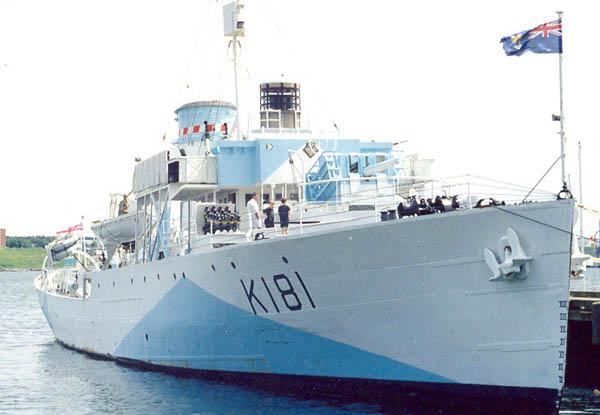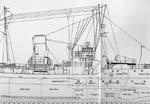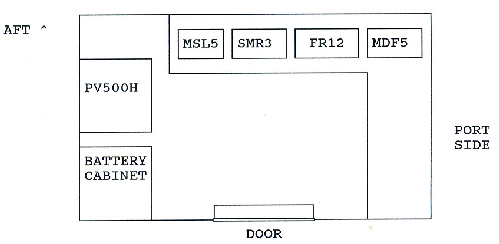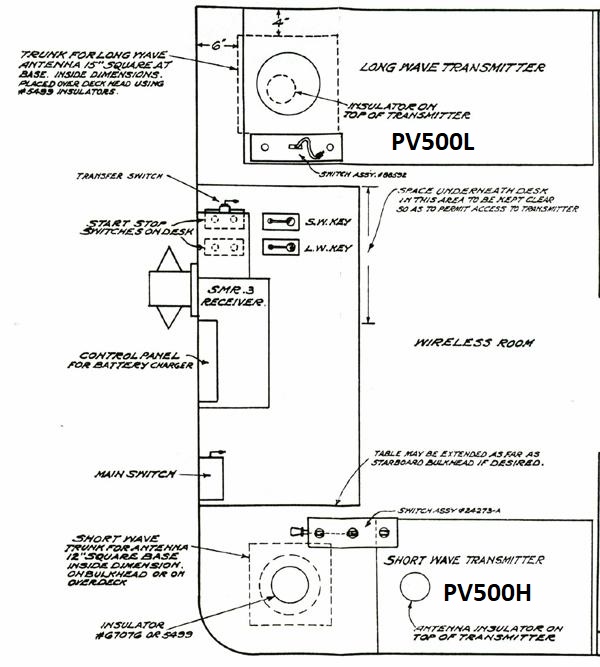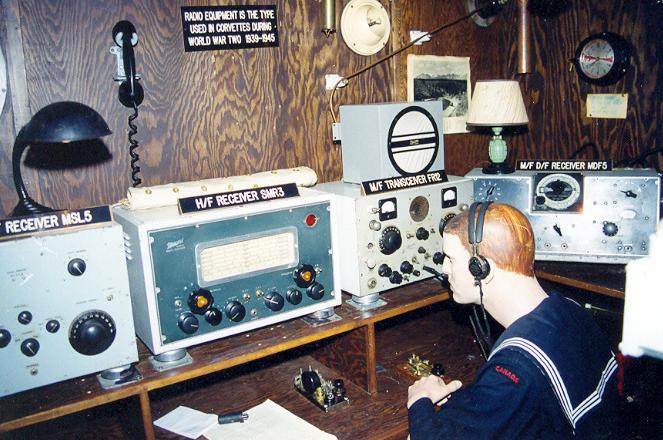CREW COMPLEMENT
The corvette, in its original design, was a very simple ship intended
for very simple tasks of comparatively short duration. Perhaps nowhere
is this more evident than in early plans for crew size and accommodation.
The original complement was twenty-nine all ranks, but the earliest evidence
of crew size for Canadian corvettes suggested a total of four officers
and forty-eight ratings, as follows:
1 Lieutenant Commander, as Captain
1 Lieutenant, RCN(R)
2 Lieutenants, or Sub Lieutenants, RCN(VR)
1 Chief Petty Officer
3 Leading Seamen
12 Able or Ordinary Seamen
1 Leading Telegraphist
1 Telegraphist
1 Telegraphist Signalman
1 Signalman
1 Engineer Officer, or Chief Engine Room Artificer
3 ERAs
3 Stoker POs
6 Leading Stokers
10 Stokers
1 UPO or LVA
2 Cooks
2 Stewards
Among these crewmen were the following weapons and sensor specialists
(non-substantive ratings):
1 Telegraphist Coder
1 Leading Coder
2 Quarters Ratings (Gunnery Specialists)
1 Leading Torpedoman (in charge of Depth Charges and Electronics)
2 Seamen Torpedomen
3 High Signals Detection Ratings (Sonar operators)
3 Signals Detection Operators
As the size of the crew and the complexity of the weapons and sensors
increased, the number of specialists and support personnel grew as well.
By1941 radar, anti-aircraft and more signal ratings had been added, as
had an additional officer.
The following equipment list for Corvettes was complied from
FECA charts and M-2 cards on February 26, 1945. In the original document,
there were columns labelled "Other Transmitters", "Other L.H." (meaning
unknown) and "Other Transmitters/Receivers". These have not been copied
into
the table below because those headings have no meaning. All the Algerines
listed were paid off after the end of WWII.
Descriptions for the equipment can be found in another
section of this web document. A few notes about the equipment in the
tables:
* DAS-1, and DAS-2 are identical pieces of Loran 'A' receiver equipment.
The numerical suffix denotes different production contracts.
* RTA, 457 and 431 types remain unknown at this time.
* CCM is crypto equipment.
The ships listed in the Wireless Equipment table below were all Castle
class corvettes built in the UK and operated by the RCN. That's the reason
why these vessels were fitted with so much British electronics.
Corvettes built at the Burrard Shipyard in Vancouver cost $605,000 each.
WIRELESS EQUIPMENT ( CASTLE CLASS ONLY) - February 1945
The data in the tables below was extracted from BR 299, a Royal
Navy publication dated 1947. Photos and specs for some of this equipment
can be found in this document
including the specs for all 60 series transmitters . Any numeric
suffixes which appear for American made equipment, denote the procurement
contract number. A TBL-4 is identical to a TBL-12 but was made on
perhaps a under a different contract number or even a different contractor.
BR 299 lists Sackville as a Loop Layer vessel. During the period May
1946 to Apr 1946 she wore pennant Z62. Sackville eventually became a hydrographic
research ship then was restored to her wartime configuration to become
Canada's Naval Memorial in Halifax
On January 27, 1945, Woodstock was paid off in Esquimalt for conversion
to a loop layer but upon recommissioning on May 17, she was employed as
a weather observation ship and shared a patrol with United States ships
some 500 miles westward of Vancouver Island. She was finally paid off in
1946.
